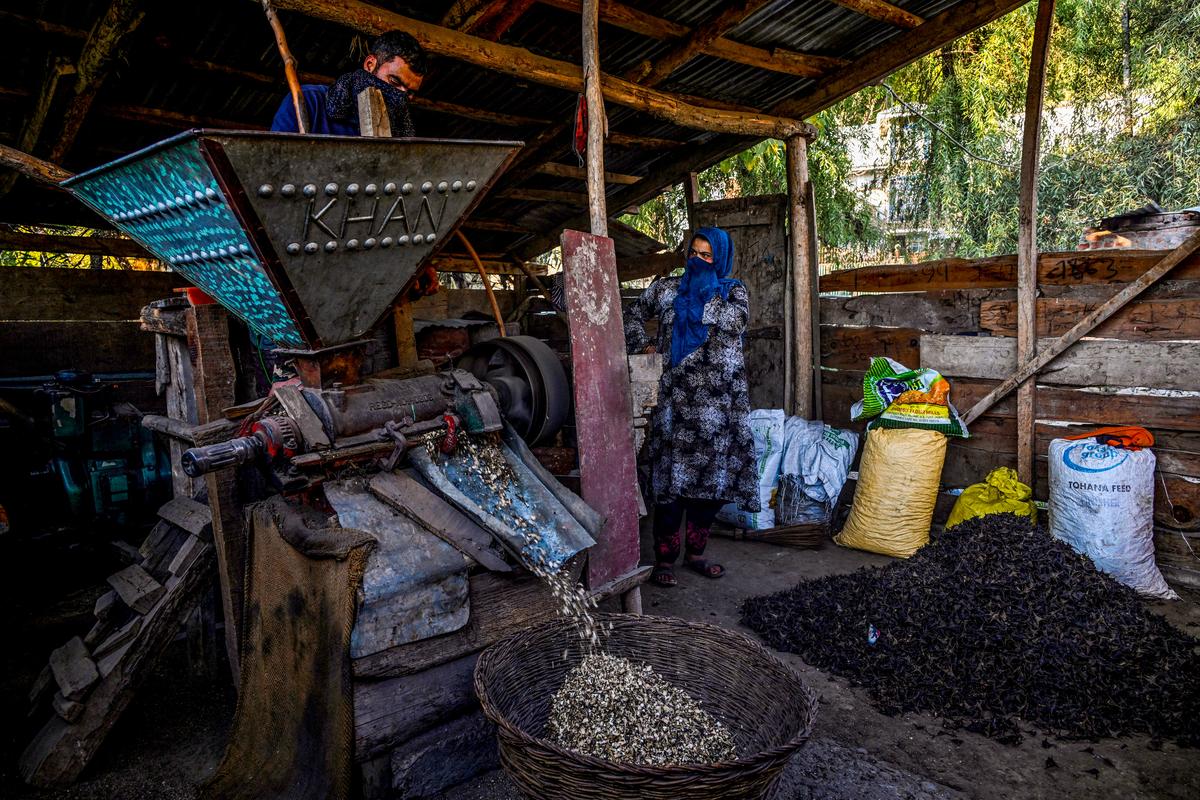Water chestnut, known as goer in Kashmir, is an aquatic vegetable that grows in the Wular Lake, one of the largest freshwater lakes in Asia. The grass-like sedge is in high demand during autumn in Kashmir. For hundreds of families living around the lake in Bandipora district of northern Kashmir, it’s one of the main sources of income in the season.
The harvest typically begins in late September with people from the villages around the lake, both men and women, taking part in the tedious work to pull out the water chestnuts.
They venture into the lake in shikaras and other boats to start the labour-intensive exercise, spending several hours on the lake to collect the chestnuts. The plants have extremely sharp spines with barbs that can cause serious injuries if stepped upon. The villagers make footwear out of long pieces of wood to venture into the marshy areas of the lake.
Many prefer to sell the vegetable on the day of harvest, while others take it home for drying and processing to fetch a better price.
The edible kernel, concealed beneath a thick outer layer, is peeled off, dried, and pounded into flour. People also use the sturdy dried outer shells as fuel in the traditional fire pots known as kangri during winter.
Water chestnut and lotus stem are eaten in dishes during during Navaratri, especially when fasting rituals may not permit the use of grains. They are also easily digestible and provide energy, which is crucial when fasting. When peeled, the chestnut reveals white flesh with a crunchy, juicy texture and a sweet taste.
The trade in water chestnut is mainly handled by the poorer section of society and is not regulated or registered by the government. Despite the challenges, it remains a significant part of the economic activity around the lake, besides tourism and fishing.
Over the years, dry weather and increasing marshy land around the lake caused a decline in production of water chestnuts and have adversely affected livelihoods.
Photo: IMRAN NISSAR
Hidden gems: Villagers agitate the water with boat paddles to separate floating chestnut stalks from other foliage and debris clogging the marshy water.
Photo: IMRAN NISSAR
Fine harvest: Women pull out water chestnuts from the Wular Lake in Bandipora district of northern Kashmir.
Photo: IMRAN NISSAR
Prized crop: The grass-like sedge is in demand during autumn.
Photo: IMRAN NISSAR
Collective effort: Women wash the harvest on the banks of the lake.
Photo: IMRAN NISSAR
Hard to peel: The marble-sized fruit must be shelled and dried for a crisp texture.
Photo: IMRAN NISSAR
Long process: A woman dries water chestnuts over a clay stove.
Photo: IMRAN NISSAR
Fruit of labour: The outer shell yields to practised hands.
Photo: IMRAN NISSAR
Powdery form: The dry produce is milled to obtain flour.
Photo: IMRAN NISSAR
Careful steps: A woman uses footwear made of large wooden boards to protect her feet from sharp spines of the water chestnut plants as she walks over a marshy area to collect the vegetable.
Published – October 13, 2024 08:04 am IST


